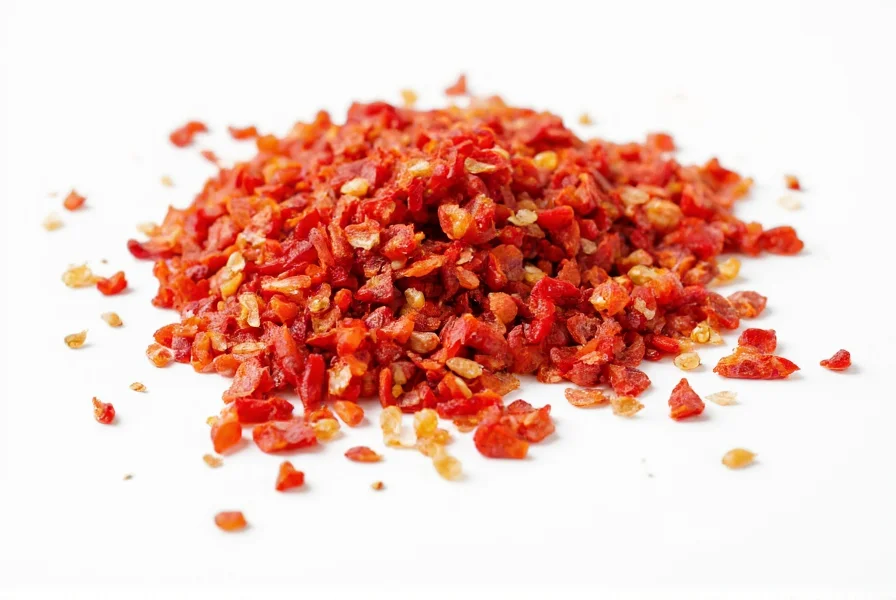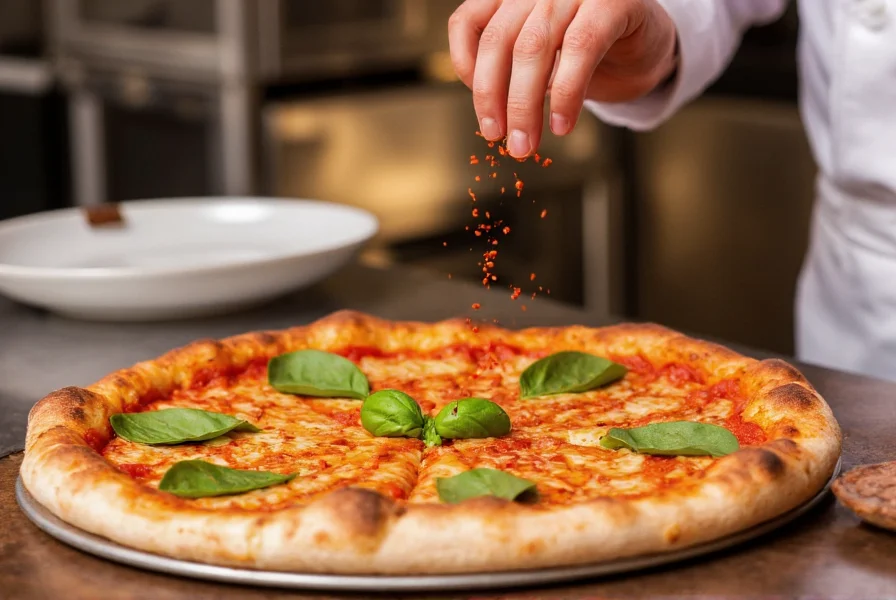
Understanding Pepper Flakes: More Than Just Heat
When you ask what are pepper flakes, you're exploring one of the most accessible and versatile spices in global cuisine. These small fragments of dried chili peppers deliver both heat and nuanced flavor to dishes. Unlike pre-ground pepper that loses potency quickly, quality pepper flakes maintain their aromatic compounds longer due to their coarser texture.
How Pepper Flakes Are Made
Producers create pepper flakes by harvesting ripe chili peppers, then air-drying or oven-drying them until completely dehydrated. The dried peppers undergo a crushing process that preserves varying fragment sizes. This intentional inconsistency creates what culinary experts call "texture gradient"—smaller pieces deliver immediate heat while larger fragments provide sustained flavor release during cooking.
Common Types of Pepper Flakes
Not all pepper flakes are created equal. Understanding these varieties helps you select the right type for your culinary needs:
| Type | Heat Level (Scoville) | Flavor Profile | Best Uses |
|---|---|---|---|
| Standard Red Pepper Flakes | 30,000-50,000 | Sharp, slightly smoky | Pizza, pasta, soups |
| Aleppo Pepper Flakes | 10,000-15,000 | Fruity, moderate heat | Mediterranean dishes, roasted vegetables |
| Urfa Biber | 20,000-30,000 | Smoky, raisin-like | Meat rubs, stews |
| Crushed Calabrian Chili | 25,000-45,000 | Bright, tangy heat | Seafood, tomato-based sauces |
Pepper Flakes vs. Ground Pepper: Key Differences
Many home cooks wonder about the difference between crushed red pepper and pepper flakes. While often used interchangeably, subtle distinctions exist:
- Texture: Flakes maintain visible fragments; ground pepper creates a uniform powder
- Flavor release: Flakes provide gradual heat infusion; ground pepper delivers immediate intensity
- Shelf life: Flakes retain potency 2-3 months longer due to reduced surface area
- Culinary application: Flakes work better for finishing dishes; ground pepper integrates more evenly during cooking
Culinary Applications of Pepper Flakes
Professional chefs leverage how to use pepper flakes in cooking through strategic application methods:
Dry Applications
Sprinkle directly onto pizza, eggs, or avocado toast for immediate heat and visual appeal. The coarse texture creates attractive contrast against smooth surfaces.
Infused Applications
Add to hot oil at the beginning of cooking to create "pepper oil"—a technique common in Italian and Chinese cuisines. The oil extracts capsaicin and aromatic compounds, distributing heat evenly throughout the dish.
Marinades and Rubs
Combine with other dry spices to create complex rubs for meats. The flakes' texture helps the seasoning adhere to protein surfaces while slowly releasing flavor during cooking.

Storage Guidelines for Maximum Freshness
Understanding how long do pepper flakes last ensures optimal flavor. Proper storage extends their shelf life significantly:
- Store in airtight containers away from light and moisture
- Keep in a cool, dark cupboard (not above the stove)
- Refrigeration extends freshness to 18-24 months
- Freezing preserves potency for up to 3 years
Signs of degraded pepper flakes include faded color, diminished aroma, and loss of heat intensity. Properly stored flakes maintain their characteristic brick-red color and pungent scent.
Substituting Pepper Flakes in Recipes
When you need pepper flakes substitutes, consider these alternatives based on your recipe's requirements:
- Paprika + cayenne (3:1 ratio) for similar color and adjustable heat
- Crushed dried chilies for more complex flavor profiles
- Hot sauce for liquid-based recipes (use 1/4 tsp per 1/8 tsp flakes)
- freshly cracked black pepper for milder heat with different flavor notes
Remember that substitutions affect both heat level and flavor complexity. Adjust quantities based on the specific chili variety used in your recipe.
Frequently Asked Questions
What are red pepper flakes made of?
Red pepper flakes typically consist of dried cayenne peppers, though commercial blends often include other chili varieties like jalapeño, serrano, and bell peppers. The seeds and membranes remain intact, contributing to both heat and flavor complexity. Authentic Italian-style flakes sometimes include oregano and other herbs.
Are pepper flakes the same as crushed red pepper?
While often used interchangeably, there are subtle differences. Crushed red pepper typically refers to a specific blend of dried red chilies (primarily cayenne), while pepper flakes can include various chili types. Commercial "crushed red pepper" usually has a more consistent texture, whereas artisanal pepper flakes show greater variation in fragment size.
How hot are pepper flakes compared to fresh chilies?
Drying concentrates capsaicin, making pepper flakes significantly hotter than their fresh counterparts. One teaspoon of red pepper flakes equals approximately 2-3 fresh cayenne peppers in heat intensity. The drying process also transforms flavor compounds, creating deeper, smokier notes not present in fresh chilies.
Can you make your own pepper flakes at home?
Yes, making homemade pepper flakes is straightforward. Select ripe chili peppers, wash and dry thoroughly, then air-dry or use a food dehydrator until brittle. Remove stems, then crush by hand or pulse in a food processor to achieve varying fragment sizes. Store in an airtight container away from light for maximum freshness.











 浙公网安备
33010002000092号
浙公网安备
33010002000092号 浙B2-20120091-4
浙B2-20120091-4